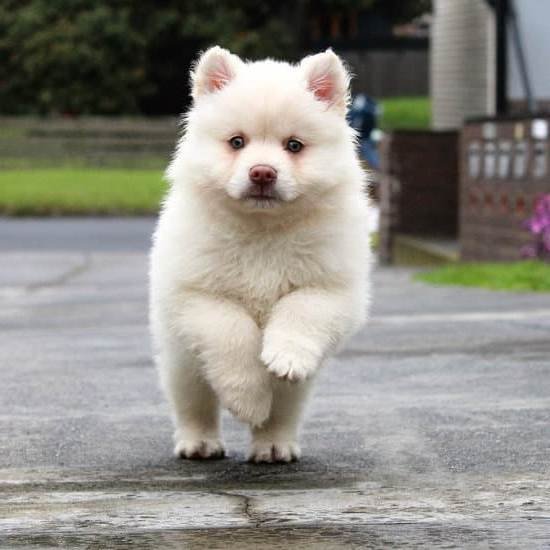Introduction
Dog Training with an E Collar, also known as collar conditioning or electronic-collar training, is a specialized form of dog training which uses a device known as an E Collar (also known as a shock collar and electric collar) to augment traditional dog obedience and behavior modification techniques. This type of training has become increasingly popular in recent years due to its effectiveness in helping dogs become more obedient and better behaved.
The electronic stimulation delivered by the E-Collar provides a low level shock that acts like a mild vibration or tap, warning the dog to cease unwanted behavior. Adjusted correctly, this negative reinforcement can help reduce behaviors such as excessive barking, aggression, running away and jumping up on people, among other issues. The correctly chosen level of intensity used during collar conditioning should be just high enough that the animal pays attention while still maintaining their comfort levels. Dog trainers will often toggle between verbal commands with positive reinforcement (such as food rewards) and minimal use of the corrective stimulation of the E Collar in order to provide consistent motivation for good behaviors. The end result should be a happy, obedient pet!
Exploring Different Types of E Collars
The type of E collar used for dog training can vary significantly depending upon the desired outcome. Generally speaking, an Electronic Collar (E Collar) is a device that fits around your dog’s neck and utilizes low levels of electrical current to either stimulate or warn your pup about his/her behaviour. Some E collars provide verbal or sound cues in addition to the electric stimulus, while others provide only shock stimulation when activated by the trainer’s hand-held transmitter.
One popular type of E Collar is a head halter-style collar; these collars are designed to give the pet owner more control over their pet without applying too much pressure on them. Because this type of collar redistributes the pressure from the traditional neck collar, it improves a pet’s ability to focus on commands more easily and allows more precise corrections during training sessions. These types of E collars are often highly effective with stubborn dogs who may have difficulty following commands or be prone to bad behavior.
Another option is a “no bark” style E Collar – this type of device provides an instantaneous electrical impulse when your pup barks so as to train him or her to stay quiet in certain situations. This is a great tool for teaching your pup not to bark when he/she does not need to and also helps with controlling excessive barking due to boredom or separation anxiety.
Finally, there are remote operated E collars which allow owners greater distance control over their pets; these devices use pulses rather than physical contact with the user giving them more options when correcting their pup’s behavior. A remote controlled reaction collar allows you greater grab at teaching complex obedience commands such as “down”, “stay put”, “come here” etc., while still providing positive reinforcement when required as opposed to negative punishment techniques like physical scolding which can be ineffective as well as dangerous for some breeds of dogs that are particularly resistant and strong willed.
Understanding the Basics of E Collar Training
E-collar training is a type of dog training method that uses a mild electric shock to train your canine companion. The device has two main parts: the collar and the handheld transmitter. The collar has metal contact points that deliver the electrical impulse, and the transmitter sends signals containing information about the strength and duration of stimulation being sent to the collar. While it’s important to understand how it works, it’s just as important to understand why this method is used in training dogs.
Many trainers who use e-collars often find they provide increased efficiency in teaching commands such as recall, sit, down, quiet barking, and coming when called. This type of training provides consistency, reliability and clear communication for dogs without causing them any physical discomfort or anxiety. Additionally, an e-collar encourages good behaviour using positive reinforcement; if the dog does something wrong like pull on the leash or run away when off leash – then an e-collar can help stop this behaviour by providing a negative consequence (e.g. stimulated) quickly but still remain safe while doing so. As a form of positive reinforcement as opposed to punishment, an e-collar can reward your pup with stimulation when they perform desired behaviours like listening to you or going where you want them to go, creating consistency which helps with learning new skills faster.
When selecting an e-collar for your pet you should take into consideration their size and temperament; usually customized settings are best suited for different types of dogs – from those sensitive to those more rambunctious pups – allowing for controlled stimulation levels depending on each individual pooch’s needs. Additionally, keep in mind your pup’s safety as well before getting started; this means checking regularly for tightness and following directions carefully during set up or administration of stimulus correction during training sessions if needed!
Benefits of Using an E Collar in Training Your Dog
An E collar (also known as an electric collar or shock collar) is a device that utilizes electric pulses to provide training corrections in order to reinforce commands and modify behavior in dogs. It works by emitting vibrations, beeps or buzzes, or administering a brief electric pulse at a press of the remote control.
The use of an E collar has many advantages for both you and your dog.
First and foremost, the effectiveness of applying an immediate response makes it easier for dogs to understand the behaviors that earn rewards from their owners. This device is particularly helpful if your dog possesses highly excitable behavior and is easily distracted – rather than using a physical leash each time and shouting commands repeatedly, the application of varying levels of stimulation helps your pet quickly associate particular commands as well as how he should react in certain situations.
Moreover, since these collars offer consistent corrective feedback that helps avoid confusion and keeps distractions away, achieving long-term obedience with minimal effort is possible. Additionally, they allow handlers to extend their reach; with one press off the remote you can send a signal which is far greater than any verbal command can ever reach! You don’t have to worry about being too far away while addressing unwanted behaviors like jumping on people or barking excessively.
Finally, these types of collars are highly adjustable – ranging from static shock devices intended for more serious offenses all the way down to vibration/tone only settings meant for minor misbehaviors such as food/play aggression or general disobedience when other training methods prove ineffective. This is beneficial for providing satisfaction without risking physical harm since each setting accommodates individual pooches’ pain tolerance levels.
Setting Up the E Collar for Proper Dog Training Results
Before you begin training your dog with an e collar, it is important to ensure it is properly set up. This includes checking the collar’s contact points and making sure they are snugly against the dog’s neck. It is highly recommended as well to perform a skin check beforehand. It is essential that there are no cuts, rattles or irritations around the area of the contact points before you begin using the e collar with your pup. This is also a great time to make sure all settings are working correctly and that any necessary modifications are made based on your pup’s size and breed. Additionally, when introducing an e collar to your dog, start slowly by setting the stimulation level low until they become comfortable with their new accessory and gradually increase it as needed during training sessions. Lastly, make sure to have plenty of treats handy as positive reinforcement during training exercises.
Teaching More Advanced Commands Using an E Collar
In addition to teaching basic commands such as “sit”, “stop”, and “come” with an e collar, you can also use the device to teach more advanced commands. For example, you can use the collar to teach a dog to stay in a certain area or retrieve an object from a distance. You need to ensure that you are using positive reinforcement when doing so, however. For example, if you are teaching your dog to stay within a certain area, start by giving them ample praise right after they enter the designated area. As they start spending more time inside of the designated area reward them with treats and praise regularly throughout their stay. Make sure to only give them a slight buzz from the e collar when they exit the given area’s boundaries; that way they don’t form any negative associations with entering their designated space. Additionally, when teaching your dog more complex commands make sure that you break it down into simple steps so that your pup has no difficulty understanding what is expected of them.
Recommended Professional Products to Consider
When it comes to dog training with an e-collar, there are a variety of professional products available on the market. Depending on the size and temperament of your pup, you should carefully consider which product will be best suited for you and your furry friend. For instance, if you own a larger breed that needs more corrections, you may want to look into heavier duty models such as the SportDOG 425X. This particular collar provides up to 100 levels of correction depending on the size and fur type of your pup. Additionally, the SportDOG 425X features both a stimulation only mode as well as vibration and tone for additional support during training sessions.
In addition to the SportDOG 425X, there are more traditional models such as Dogtra models that can also be adequately used during teaching sessions. The Dogtra model is slightly lighter than some other products available, yet still offers different levels of correction depending on the size of your pup. Both shocks and tones are included with this product as well in order to offer extra support when needed. Finally, if you prefer a wireless transmitter option then the PetTech PT0Z1 might be better suited for your needs. This unit provides a rechargeable battery that offers an impressive range of up to 1/2 mile along with 16 levels of adjustable stimulation plus vibration & tone options
Potential Pitfalls to Avoid When Using an E Collar
E Collars are a popular tool for dog training, but there are some potential pitfalls to avoid. First, it is important to take the time to properly fit the E Collar so that it fits snugly but not too tightly against your dog’s neck. Additionally, you should always use the lowest shock level possible to effectively communicate with your dog. Over-correction or using shocks that are too strong can lead to psychological damage and could interfere with your dog’s learning process. It is also important not to rely on the collar solely for training purposes. Positive reinforcement is just as important (if not more so) when training your dog so that they understand what positive behaviors you want them to display and why. Finally, be aware of any physical safety risks of using an E Collar such as skin irritation or burns if used improperly. Always follow the instructions closely and choose a collar with a high-quality design.
Alternative Training Techniques That May Work for You
There are a number of alternative training techniques that may be good alternatives to using an e-collar for dog training. These methods require a lot of patience and consistency on the part of the trainer, but can result in long-term beneficial behaviors. Clicker training is one type of positive reinforcement method that uses a small clicker device combined with treats and verbal praise in order to teach desired behaviors. Operant conditioning involves mixing positive reinforcement with negative punishment; giving rewards when certain behaviors are performed, and withholding those rewards if unwanted behaviors occur. Finally, shaping is an technique that reinforces incremental or incremental improvements towards reaching complex goals – such as agility courses or performing tricks. Instead of directly teaching the dog steps, shaping involves rewarding the successive approximations toward completing each behavior until the dog has learned it on his own. Each technique requires time, dedication and plenty of practice, but may be effective options for those looking for alternatives to e-collar training.
Tips for Ensuring Maximum Effectiveness with E Collar Training
1. Begin by slowly getting your dog used to the collar. If you put it on and instantly begin training, they may become overwhelmed and not understand what you are teaching them.
2. Introduce the collar as a positive tool that they get rewards for using. Regularly offer treats whenever they wear the collar in order to create a positive association with it.
3. Make sure that there is an effective pre-training session done before any e collar training is used in order to ensure that your dog understands commands without the use of physical stimulation when verbal commands fail.
4. Always supervise your dog when using the e collar and if their behavior begins to improve on their own immediately turn off the device or switch it to its lowest setting so that your dog associates good behavior with stopping stimulation, meaning that even after taking the device off, good behavior can continue without presence of punishment or correction from an e collar device.
5. Start using the stimulation more gradually and infrequently (in 1 second increments) until your dog demonstrates impulse control with previously learned behaviors before gradually increasing intensity as needed; use reinforcement methods such as praise or treats upon hearing command correctly followed by brief stimulation on a lower setting if need be should they not comply initially
6. Have patience! Training with an e-collar can take time so always remain calm and consistent, giving plenty of rewards for correct behavior until all desired behaviors have been trained successfully and consistently over time with no issues despite environmental stimulants or distractions
Overcoming Challenges with E Collar Training
When it comes to dog training, an e collar is a very useful tool. It is designed to give dogs gentle yet effective stimulation when they do something wrong and communicate with them. This type of communication often works far better than simply scolding or chastising the dog.
However, there are some cases where e-collar training can be challenging. One issue many owners have is setting the right level of stimulation. The intensity should not be too high or too low – it must be just right in order for the dog to understand the correct behavior without feeling pain or discomfort. Furthermore, owners should make sure that their dogs don’t develop any negative associations with the e-collar. It’s important to positively reinforce good behavior and always use positive punishment such as verbal scolding instead of physical punishment like increased stimulation from the e-collar.
Another challenge faced by owners is making sure their dogs associate the e-collar with the desired action of staying inside a specified area or coming back to them in an off-leash situation promptlYy. This may require patience and repetition on the part of both owner and dog for successful results. For example, when calling a dog who has gone off-leash, repeating this action multiple times is necessary so that your pets understand what’s expected from them each time they respond to their owners command without fail through proper use of an e collar’s stimulation control.
Finally, even when using the right levels of intensity and duration with an e collar, some dogs may require additional training due to other issues such as obedience or aggression problems that need special attention and care to resolve. Such cases may require additional assistance from qualified trainers or animal behaviorists in order for these issues to be addressed properly by incrementally increasing difficulty levels while making sure no harm comes upon either person or pet during any stage of the process.
Conclusion
When it comes to dog training with an E collar, a balance must be found between using the tool correctly and not overusing it. Training should always be implemented in a positive way, never as punishment or a means of intimidating the pet. Treats and praise should be used to reward good behavior installed through commands given with the E collar. If used properly, an E collar can help shape your pet and build communication between you and your four-legged companion.
The key to successful dog training with an E collar is finding the right balance between using it correctly without overusing it. It’s necessary to begin training sessions knowing the individual needs of each dog, as well as their physical capabilities, sensitivity and propensity for learning. Care must also be taken to ensure that the E collar doesn’t become too harsh or startling for the pet. Starting out slow at low levels of vibration or tone is important for building trust between you and your pet. Rewards in the form of treats or praise are essential for reinforcing good behaviour after proper commands have been given with the E collar. Finally, special attention should be paid to proper cleaning, maintenance and storage of all equipment related to E collaring so that negative associations don’t form through poor hygiene practices or bad storage habits. With these tips in mind, finding a balance when using an E Collar can lead to effective yet gentle dog training and help build trust between you and your beloved pet.

Welcome to the blog! I am a professional dog trainer and have been working with dogs for many years. In this blog, I will be discussing various topics related to dog training, including tips, tricks, and advice. I hope you find this information helpful and informative. Thanks for reading!





